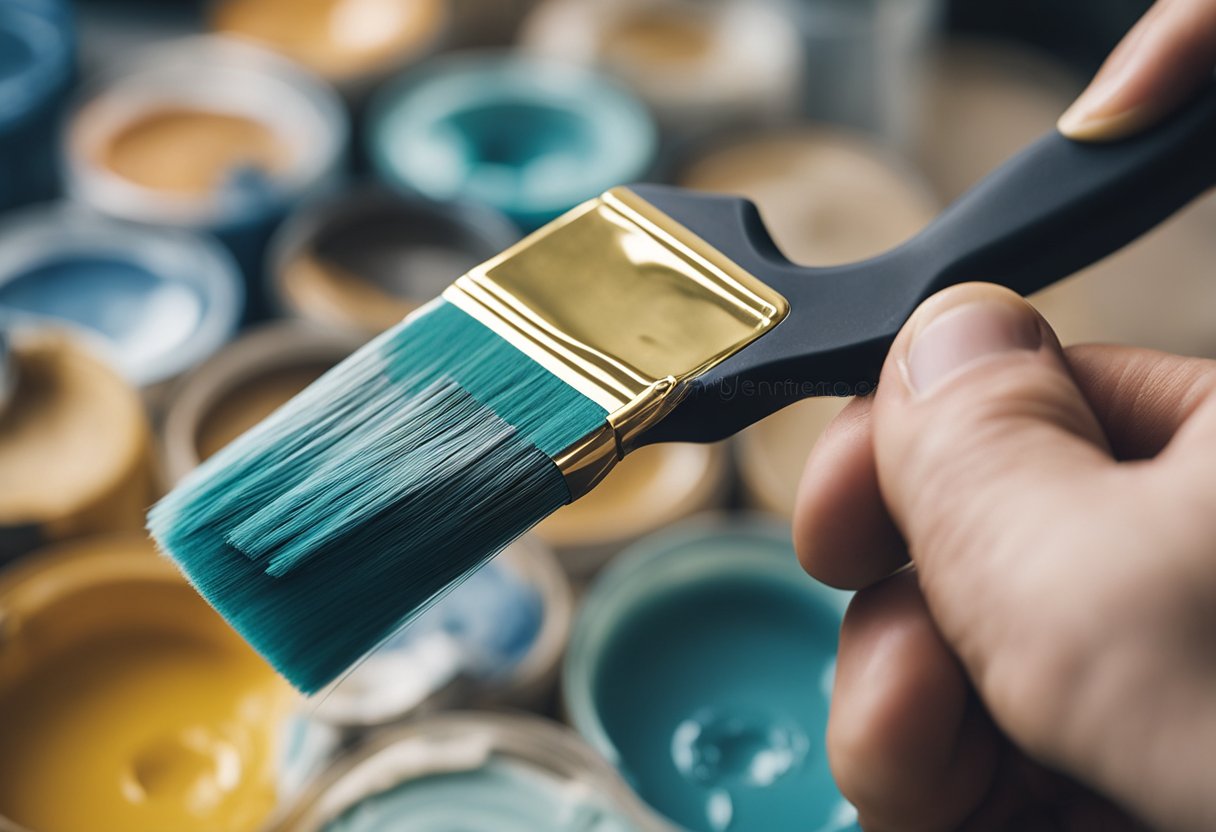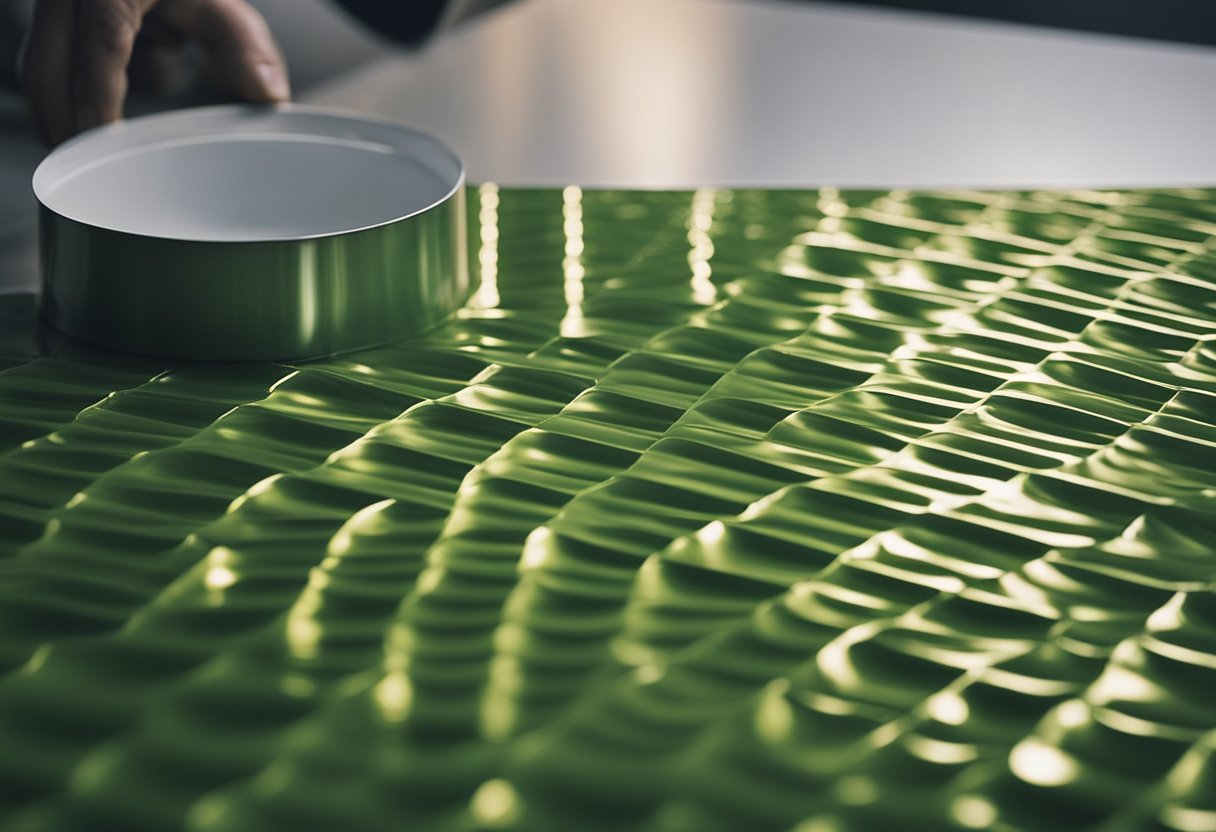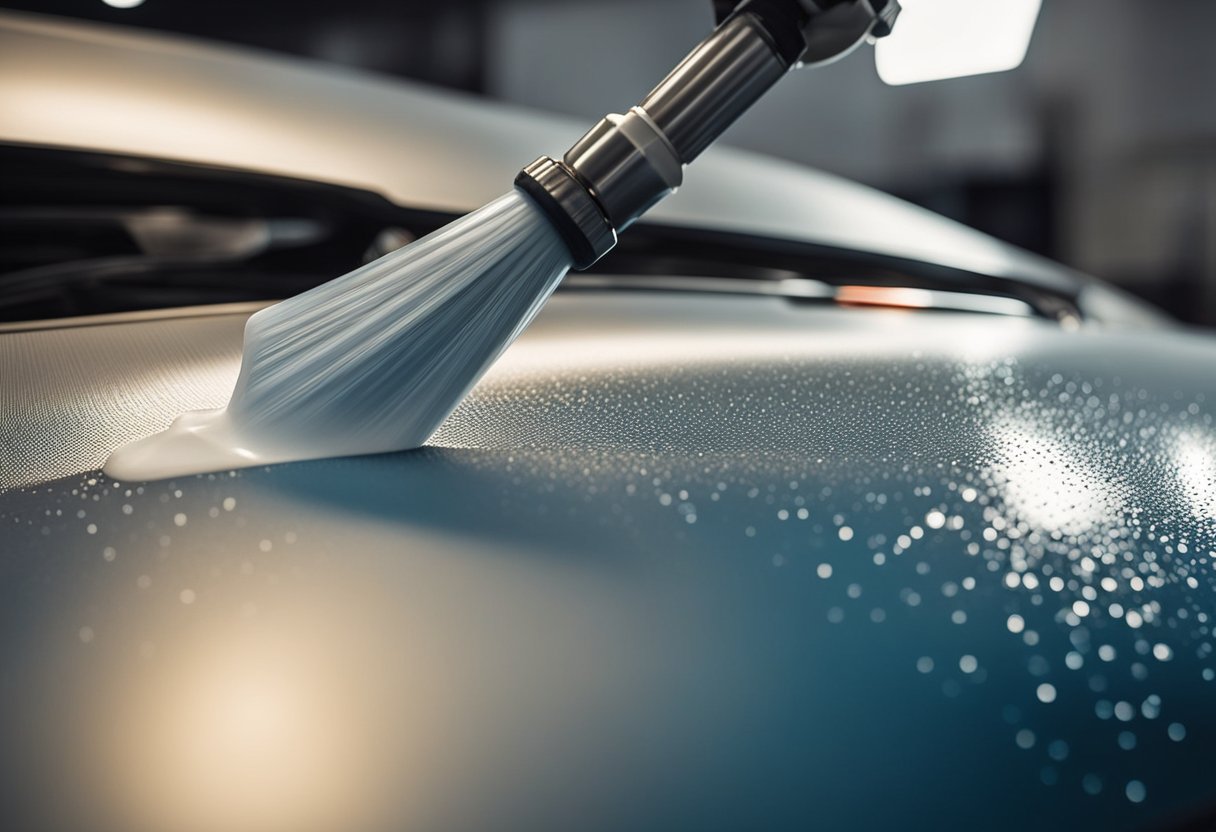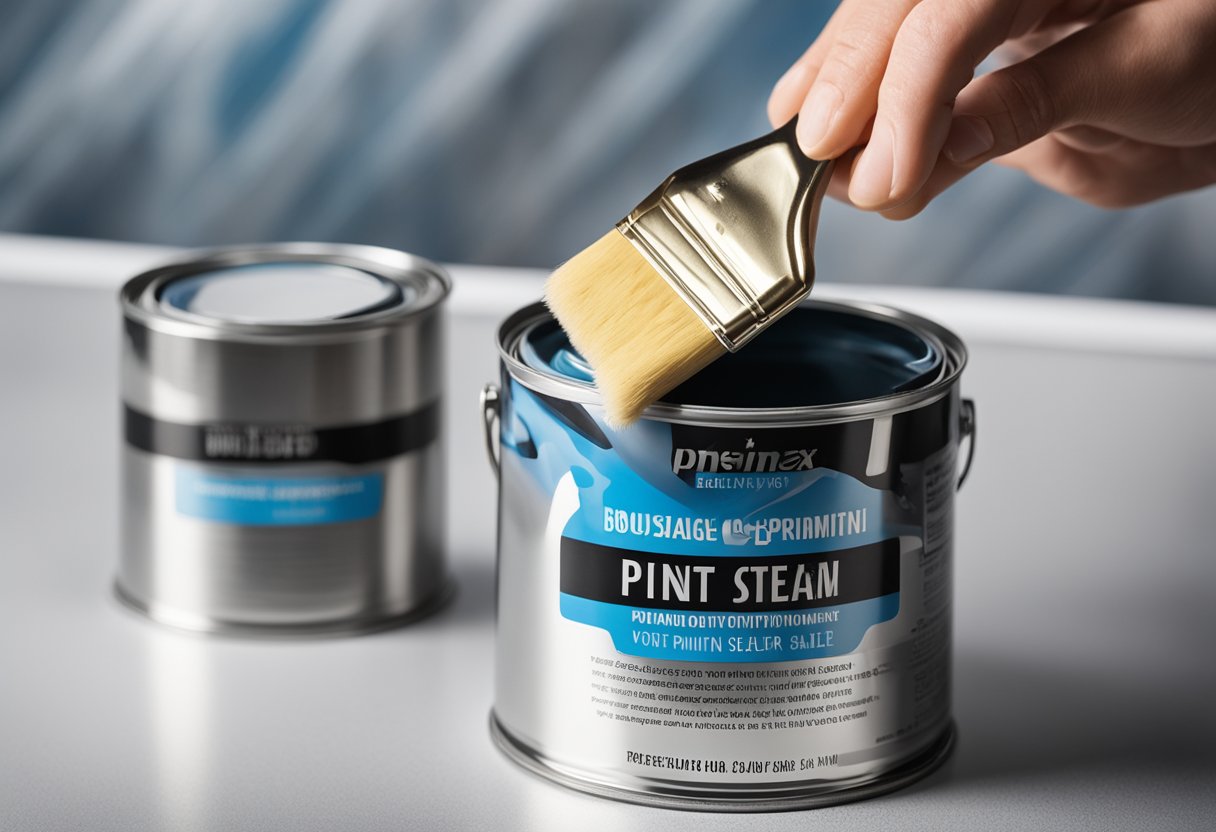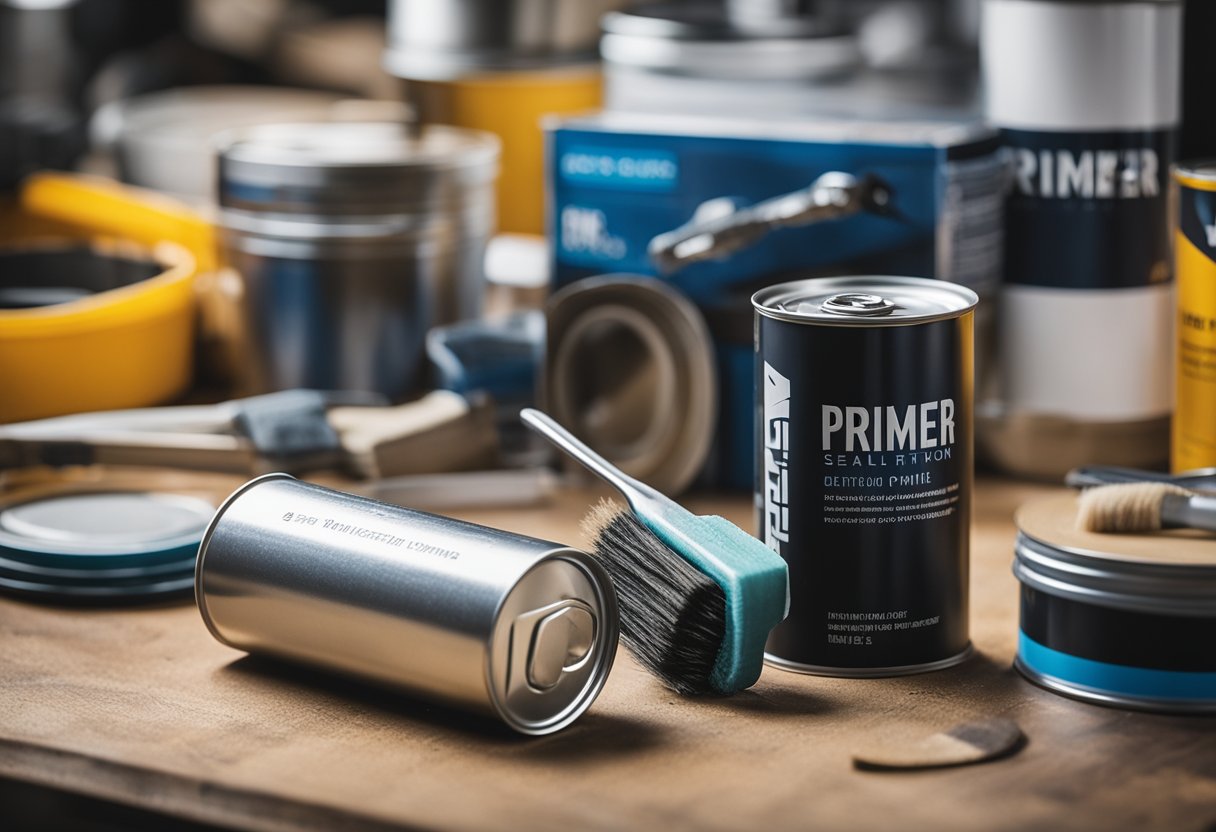When it comes to painting a surface, choosing the right product to apply as your base coat is crucial. Primers and sealers are two of the most commonly used products, and it can be confusing to determine which one to use first. While both products serve the same purpose of preparing a surface for paint, there are differences in their application and purpose that can affect the outcome of your project.
Understanding the differences between primers and sealers is the first step to choosing the right product for your project. Primers are typically used on new surfaces or surfaces that have been sanded down to the bare material. They provide a smooth, even surface for the paint to adhere to and can also help to cover up imperfections or stains on the surface. Sealers, on the other hand, are used to create a barrier between the surface and the paint. They can be used before a primer or as a substitute for a primer, depending on the surface and the type of paint being used.
Key Takeaways:
- Determine whether you need a primer or sealer based on the surface you are painting and the type of paint you will be using.
- Consider the advantages and disadvantages of water-based and oil-based products before making your choice.
- Proper surface preparation and application techniques are key to achieving a successful outcome.
Understanding Primers and Sealers
https://www.youtube.com/watch?v=EBj_wz-2HW0&embed=true
As a professional painter, I know that applying a coat of primer or sealer before painting is essential for achieving a smooth and long-lasting finish. Both primers and sealers serve different purposes, and it’s crucial to understand their differences before deciding which one to use.
A primer is the first coat of paint applied to a substrate, and its primary purpose is to provide adhesion for the topcoat. It helps the topcoat to bond better to the surface, provides an even base for the paint, and can also help to hide imperfections in the substrate. Primers are usually used on new or uncoated surfaces, such as bare wood, metal, or plaster.
On the other hand, a sealer is a type of coating that is applied over a finished surface to help protect it from moisture, stains, and other environmental factors. It can also be used as a substitute for a primer, as it provides a smooth and even base for the topcoat to adhere to. Sealers are typically used on previously painted surfaces, such as walls, cabinets, or furniture.
It’s important to note that some products are marketed as “primer sealer” or “primer paint” or “paint sealer,” which can cause confusion. In general, a primer sealer is a type of primer that also has sealing properties, while a paint sealer is a type of sealer that can also be used as a topcoat. A primer paint is a type of paint that contains both primer and paint in one product, which can save time and effort during the painting process.
When deciding whether to use a primer or sealer, consider the substrate and the finish you want to achieve. If you’re painting a new or uncoated surface, a primer is necessary to provide adhesion and a smooth base for the topcoat. If you’re painting over an existing finish, a sealer can help to protect the surface and provide a smooth base for the topcoat.
In conclusion, understanding the differences between primers and sealers is crucial for achieving a professional and long-lasting finish. Whether you’re using a primer, sealer, or a combination of both, always follow the manufacturer’s instructions and use the appropriate products for the substrate and finish you want to achieve.
Choosing Between Water-Based and Oil-Based Products
https://www.youtube.com/watch?v=NCeUEfOvamU&embed=true
When it comes to choosing between water-based and oil-based products, there are a few factors to consider. One of the main differences between the two is the type of solvent used. Oil-based products use natural or synthetic oil as a solvent, while water-based products use water as a solvent. This difference in solvents gives both undercoats different qualities.
Water-based primers are known for their low VOC content and quick drying time. This type of primer is easier to clean up and has fewer fumes than oil-based primers. In addition, water-based primers are compatible with latex paint, making them a popular choice for interior painting projects.
On the other hand, oil-based primers are known for their superior adhesion and stain-blocking properties. They are ideal for use on surfaces that are prone to moisture and humidity, as they create a harder texture that locks everything into place. Oil-based primers are also compatible with oil-based paints and are often used on exterior surfaces.
It’s worth noting that shellac-based primers are also available. These primers are known for their excellent adhesion and ability to block stains. However, they are not compatible with water-based or oil-based paints and require special handling.
When it comes down to it, the choice between water-based and oil-based primers ultimately depends on the specific project and surface being painted. If you’re unsure which type of primer to use, it’s always a good idea to consult with a professional or do some research to determine the best option for your needs.
Surface Considerations
When deciding whether to use sealer or primer first, it’s important to consider the type of surface you’ll be working with. Surfaces can be divided into two categories: porous and non-porous.
Porous surfaces, such as raw wood or oak, require a primer to help seal the surface and prevent the paint from soaking in too deeply. This can result in a more even finish and reduce the amount of paint needed. On the other hand, non-porous surfaces, such as glass or metal, may not require a primer at all, as the paint can adhere directly to the surface.
When working with wood or metal surfaces, it’s important to consider the level of roughness or smoothness. Rough surfaces may require a thicker primer to fill in any gaps or imperfections, while smooth surfaces may only require a light coat of sealer to help the paint adhere properly.
In addition, it’s important to properly prepare the surface before applying any sealer or primer. This may involve sanding the surface to create a rougher texture, or cleaning the surface to remove any dirt or debris. Proper surface preparation can help ensure that the sealer or primer adheres properly and creates a strong base for the paint to adhere to.
Overall, the decision to use sealer or primer first will depend on the specific surface you’re working with and the type of paint you’ll be using. By considering the porosity, roughness, and surface preparation of the material, you can make an informed decision and achieve the best possible results for your project.
Preparation and Application
https://www.youtube.com/watch?v=O-9yWThbydk&embed=true
When it comes to painting, proper preparation is crucial to achieving a smooth and long-lasting finish. Before applying any paint, it is important to clean and sand the surface to ensure that it is free of dirt, dust, and debris. Sanding the surface will also help the primer or sealer adhere better.
Additionally, the temperature and humidity of the environment can affect the application of the primer or sealer. It is best to apply the primer or sealer in a dry environment with a temperature between 50-85°F and humidity below 85%.
When applying primer, it is important to follow the manufacturer’s instructions carefully. This may include thinning the primer, applying multiple coats, or allowing each coat to dry completely before applying the next. It is also important to use the appropriate type of primer for the surface being painted. For example, a wood surface may require a wood primer, while a metal surface may require a metal primer.
Once the primer has been applied and allowed to dry completely, the surface can be painted. Again, it is important to follow the manufacturer’s instructions for applying the paint, including thinning the paint if necessary, applying multiple coats, and allowing each coat to dry completely before applying the next.
Overall, taking the time to properly prepare the surface and following the manufacturer’s instructions for applying the primer and paint will result in a smooth and long-lasting finish.
Dealing with Imperfections and Stains
https://www.youtube.com/watch?v=jKLTNFrpefE&embed=true
As a professional painter, I know that one of the biggest challenges in painting is dealing with imperfections and stains on the surface you are painting. Imperfections such as scratches, rust, mildew, and knots can be difficult to cover up with just paint. Similarly, stains like water stains, nicotine, and oil can bleed through the paint, ruining the finish.
To deal with these issues, it is important to use a high-quality primer or sealer before painting. A primer or sealer will not only cover up the imperfections and stains but also provide a smooth surface for the paint to adhere to.
When choosing a primer or sealer, it is important to consider its filling capabilities. A polyester primer surfacer, for example, is a high-build primer that can fill in dents and other imperfections in the surface. This type of primer is ideal for surfaces that have a lot of imperfections.
In addition to filling capabilities, it is also important to choose a primer or sealer that can block stains from bleeding through. Stains like water stains and nicotine can be particularly difficult to cover up, but a high-quality stain-blocking primer can prevent them from bleeding through the paint.
When applying primer or sealer, it is important to follow the manufacturer’s instructions. Make sure to apply the primer or sealer evenly and allow it to dry completely before applying the paint. This will ensure that the surface is smooth and even, and the paint will adhere properly.
In conclusion, when dealing with imperfections and stains on the surface you are painting, it is important to use a high-quality primer or sealer. A primer or sealer will not only cover up imperfections and stains but also provide a smooth surface for the paint to adhere to. Make sure to choose a primer or sealer with filling capabilities and stain-blocking properties, and follow the manufacturer’s instructions when applying it.
Special Considerations for Automotive Paint
When it comes to painting a car, there are some special considerations that need to be taken into account. Automotive paint is designed to withstand the harsh conditions that a car is exposed to on a daily basis. It needs to be durable, long-lasting, and resistant to things like UV rays, dirt, and debris.
Before painting your car, it is important to properly prepare the surface. This includes removing any old paint, rust, or body filler. Once the surface is clean and smooth, it is time to apply a primer.
There are a few different types of primer to choose from, including urethane primer, lacquer primer, etching primer, and epoxy primer. Each type of primer has its own unique properties and is designed for specific applications. For example, urethane primer is great for filling in small imperfections, while epoxy primer is ideal for bare metal surfaces.
After the primer has been applied, it is time to apply the basecoat paint. This is the color that will be visible on the car’s exterior. There are many different types of basecoat paint to choose from, including metallic, pearl, and solid colors.
Once the basecoat paint has been applied, it is time to apply the clear coat. This is a protective layer that helps to seal in the basecoat paint and protect it from the elements. The clear coat is available in both matte and glossy finishes.
It is important to note that painting your car is not a simple process. It requires a lot of time, effort, and patience. If you are not comfortable doing it yourself, it is best to leave it to the professionals.
In conclusion, when it comes to painting your car, there are many different factors to consider. From choosing the right primer to selecting the perfect basecoat color, it is important to take your time and do your research. With the right tools and knowledge, you can achieve a beautiful, long-lasting finish that will make your car look like new again.
Concluding Tips for a Successful Painting Project
In summary, using a sealer or primer is a crucial step in any painting project. It ensures that the paint adheres properly, provides a smooth base for the paint, and helps to prevent cracking and peeling.
When selecting a sealer or primer, consider the type of surface you are painting. For example, bare wood requires a wood primer before painting to seal the porous surface of the wood and ensure the paint adheres properly. On the other hand, water-based primers and top coats may not block stains, but an oil-based primer will.
Another important factor to consider is coverage. Look for a primer or sealer that offers excellent coverage and penetrates deeply into the surface. This will help to ensure that the paint adheres properly and provides a high-quality finish.
If you are working on a DIY project, it is essential to use high-quality paint and materials. Cheaper paints may seem like a good deal, but they often contain reactive resins or epoxies that can cause the paint to crack or peel.
Finally, take advantage of special offers and discounts when purchasing your materials. Many hardware stores and paint suppliers offer promotions and deals on high-quality paints and sealers. By doing your research and taking advantage of these offers, you can save money and ensure a successful painting project.
Remember, a successful painting project requires proper preparation, high-quality materials, and attention to detail. By following these tips and using a sealer or primer, you can achieve a flawless finish that will last for years to come.
Frequently Asked Questions
What is sealer paint used for?
Sealer paint is used to create a smooth base for paint. It is applied before the paint to ensure that the surface is properly prepared. Sealer paint is particularly useful for porous surfaces, as it fills in the pores and creates a smooth surface for the paint to adhere to. It can also be used as a substitute for primer, but it is not always recommended.
What is primer sealer automotive?
Primer sealer automotive is a type of primer that is specifically designed for use on cars. It is used to prepare the surface of the car for painting. Primer sealer automotive is particularly useful for covering up small imperfections in the surface of the car, such as scratches or dents. It also helps to protect the car from rust and other types of damage.
Difference between primer and sealer?
The main difference between primer and sealer is that primer is used to prepare the surface for paint, while sealer is used to create a smooth base for paint. Primer is typically used on bare surfaces, while sealer can be used on both bare and painted surfaces. Primer is also typically thicker than sealer, and it is designed to fill in small imperfections in the surface of the material.
Undercoat or primer for wood?
For wood, it is typically recommended to use an undercoat rather than a primer. Undercoat is specifically designed for use on wood, and it helps to create a smooth surface for paint. It also helps to protect the wood from moisture and other types of damage. Primer can also be used on wood, but it is not always recommended.
Can you use sealer over primer?
Yes, you can use sealer over primer. Sealer can be used to create an additional layer of protection for the surface, and it can also help to create a smoother surface for the paint to adhere to. However, it is not always necessary to use sealer over primer, and it can depend on the specific project and the materials being used.
Do you paint over sealer?
Yes, you can paint over sealer. Sealer is designed to create a smooth base for paint, and it is specifically designed to be painted over. However, it is important to wait until the sealer is completely dry before painting over it, as this can affect the final outcome of the project.

Hi, I’m Sal Muller of Tooltrip.com. My DIY experience led me to understand essential power tools for home projects. Tooltrip.com guides enthusiasts and professionals in choosing right tools for any job. I provide concise top tool reviews for easier, efficient DIY.

